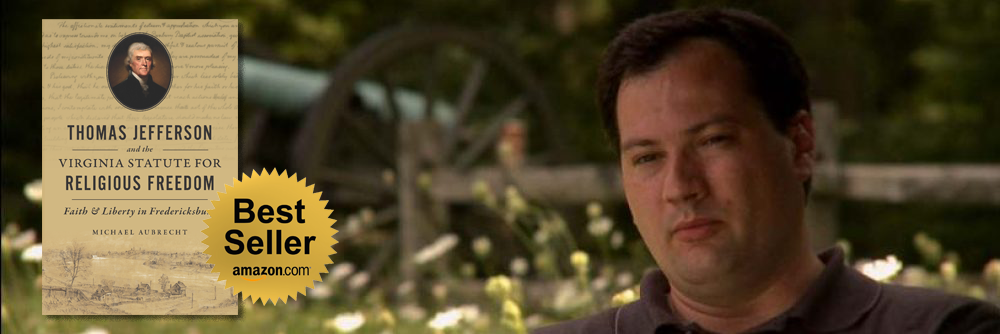“I just can’t believe we were standing on hallowed ground. You were so invaluable in bringing it all back to life—-chills! We are truly thankful to you and the amazing work you are doing to keep history alive, thank you. With much thanksgiving.” – Mike & Irene Breshears, OR
Please note that I do charge a fee for my services depending on the scope of the tour and time. This can be negotiated given financial constraints, but I do have bills to pay.
Sample Tour Stop: This walking tour introduces visitors to the historic churches of Fredericksburg. Emphasis is placed on the experiences of the black and white civilians before, during and after the Civil War.
Introduction: Fredericksburg has been referred to as a “city of churches” as its silhouette is dominated by a plethora of bell towers and steeple roofs. Clearly, anyone walking through the town can see the important role religion played in the day-to-day lives of the town’s inhabitants.
Fredericksburg Baptist Church
(Excerpt) Our next stop is Fredericksburg Baptist Church. During the Civil War, this structure suffered extensive damage from Federal artillery fire prior to the city’s occupation by Union forces during the Battle of Fredericksburg. Like many area churches, the pews were torn out and the sanctuary was used as a Federal field hospital. Today, the building remains much the way it did after the war damage was repaired.
Beginning with a small congregation, Fredericksburg Baptist Church persevered through the years and grew significantly in member numbers. Within a decade of its inauguration, the church boasted over eight hundred attendees on its rolls. Surprisingly, almost three fourths of its membership was made up of slaves and free blacks. This multiracial fellowship represented what may be considered a hypocritical dichotomy, as Christians appeared able to come together on Sundays to celebrate the Sabbath, yet remained separatists during the rest of the week.
Tension between whites and blacks was an inevitable problem as racism and rights for minorities became a highly contested topic of the day. Fredericksburg Baptist wished to use the split as an opportunity to relocate. At the time the expansion was proposed, there were approximately 625 African-American members in the church’s congregation. This group had been granted permission to attend services on Sunday at the same time as the white members attended. The inclusion however was a facade and by 1854, tensions began to interfere with worship. Separation appeared to be a foregone conclusion.
A pledge drive was established to assist in financing the construction of a newer and larger building. Despite their limited resources, and given their social situation, the minority members were able to raise an impressive sum of money. In the congregational minutes book that was dated for September 28, 1855, it reads that the congregation’s “colored brethren and sisters” pledged $1,100.
It was then determined that the black members would retain the existing building by the riverside, and the white congregation would take all pledges and construct a new building in the center of town. This of course did not sit well with everyone, so a church committee was appointed to oversee the matter. Eventually a compromise of $500 was agreed upon.
This in turn enabled the newly formed African American Baptist congregation to be received into the denomination as a separate body from that of their predecessors. Both churches were then required to draft new constitutions. After they officially gained their own house of worship, they were still not entirely free. Virginia law required the supervision of a white elder, who was tasked with supervising the proceedings…
Tours can be organized in any number of ways depending on your needs and time commitment. They are ideal for tourists as well as local groups. For rates and availability contact me at: ma@pinstripepress.net.



